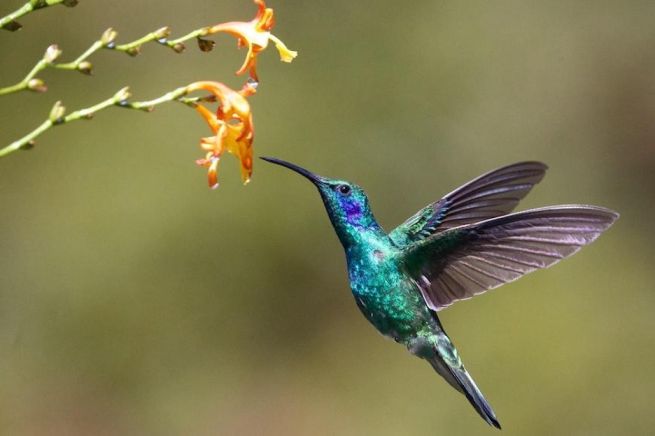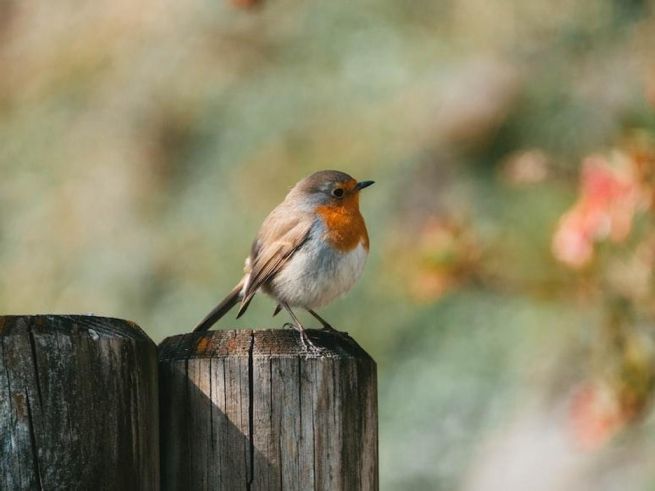Have you ever found yourself looking out your window and marveling at the beauty of birds perched in a tree? Maybe you’ve tried to call back to one or two that are singing their sweet songs, but when asked if you could identify them, you can only shrug your shoulders. Whether you want to launch into birdwatching as an advanced hobby or just be able to answer basic questions about the winged creatures around your neighborhood, having the ability to recognize birds is essential.
Connect with a verified veterinarian in minutes. Licensed vets are available 24/7 to answer your questions. No need to worry about your furry family member.
There’s no need for sophisticated equipment – simply familiarizing yourself with seven important features will give even the most inexperienced amateur birder the confidence necessary for successful identification!

Shape and Size of the Bird
Each bird has a distinct silhouette that is determined by its physical characteristics. The shape and size of a bird play a crucial role in its survival, helping it to adapt to its environment and avoid predators. Birds come in all shapes and sizes, ranging from the tiny 3-inch bee hummingbird to the majestic 9-foot wingspan of the wandering albatross. The shape of a bird can also vary greatly, with some having long, slender bills, while others have short, thick ones. Some have long, pointed wings ideal for soaring, while others have broad wings for slower, controlled flight. By taking note of the size and shape of birds, we can begin to appreciate the unique features of each species and gain a deeper understanding of our feathered friends.
Coloration
Bird watching can be a truly magnificent experience for nature lovers. It is an opportunity to marvel at the beauty of feathered creatures and learn more about their unique characteristics. Coloration is one of the most striking features to observe in birds. It can range from dull to brilliant hues and often tells a story about the bird’s habitat, behaviors, or mating rituals. Some birds sport distinctive features like a crest or markings on their wings or body that make them particularly fascinating to observe. Even for novice bird watchers, it’s easy to get started with bird watching – simply grab a pair of binoculars, head out to a park or natural reserve, and start scanning for movement in the trees. However, it’s important to remember that bird watching is a delicate activity that requires a gentle approach, as we must always respect the privacy and safety of these winged beauties.

Review symptoms, medications & behavior to keep your pets healthy with a Vet Online in just minutes.
Ask a Vet Live NowHabits and Behavior
Birds have their own unique habits and behaviors that make them fascinating to observe. One particularly interesting aspect is how they interact with one another and their surrounding environment. Whether it’s a flock of birds flying in unison or a lone bird perched on a branch, each individual has their own way of navigating their world. By observing these interactions, we can gain insight into their social structures and how they adapt to their environment. From the chirping melodies they create to the way they forage for food, every action of a bird is a testament to their extraordinary instincts and adaptability in the natural world.

Calls and Songs
Bird calls and songs are one of nature’s most beautiful and distinctive sounds. Whether you’re taking a stroll in the park or deep in the woods, learning to recognize certain calls or songs can add a whole new level of enjoyment to your outdoor experience. Each species has its own unique set of sounds, from simple chirps to intricate melodies. By taking the time to learn and appreciate these sounds, you’ll not only gain a deeper understanding of the feathered creatures around you but also develop a greater appreciation for the intricate world of nature itself.
Bill Structure
The bill is an incredibly versatile tool that plays an essential role in the bird’s survival. For example, some birds use their bill to catch prey, while others use it to dig in the ground for insects or pry open nuts and seeds. The shape of the bill can provide insight into a bird’s diet and habits, such as the long, thin bill of a hummingbird, designed for sipping nectar from flowers. The color of the bill can also vary greatly, from the vibrant red of a male cardinal to the dull brown of a sparrow. In addition, the structure of the bill can be used to classify birds into different categories, such as raptorial birds with sharp, hooked bills used for tearing flesh. Examining the billing structure of birds can provide valuable information about their lifestyle and behavior, making it an important tool for birdwatchers and scientists alike.
Legs and Feet
Birds have some of the most fascinating and unique legs and feet in the animal kingdom. Some birds have webbed feet, such as ducks and swans, which enable them to swim and wade through water. Other birds like raptors have sharp talons to grip onto branches while they hunt or perch. Birds also have the ability to perch for hours on end, thanks to their tendons that run through their legs and lock their claws, allowing them to rest while still holding onto a branch. The diversity of leg and foot features in birds is amazing and showcases the adaptations that have helped them thrive in their respective habitats.
Nesting Habits
Birds have sophisticated nesting habits that play an essential role in their survival. Depending on the species, birds build nests in a variety of places, from tree hollows and cliffs to bushes and even human-made structures. Some birds construct elaborate nests that can take weeks or even months to complete. These nests serve several purposes, from providing shelter and warmth to protecting eggs and young chicks. By studying birds’ nesting habits, we can gain insight into their behaviors and help protect habitats that are essential for the species’ survival.
Bird watching is not only an enjoyable activity; it’s also a great way to understand more about the natural world around us. So grab your binoculars next time you’re out in nature – who knows what amazing bird species you might discover!
Connect with a verified veterinarian in minutes. Licensed vets are available 24/7 to answer your questions. No need to worry about your furry family member.

Tom
Tom has always loved to write since he was little - he wanted to be either a writer or a veterinary doctor, but he ended up being a professional writer while most of his works are based on animals. He was born in San Francisco but later moved to Texas to continue his job as a writer. He graduated from the University of San Francisco where he studied biotechnology. He is happily married and a soon to be father!
Review symptoms, medications & behavior to keep your pets healthy with a Vet Online in just minutes.
Ask a Vet Live Now
